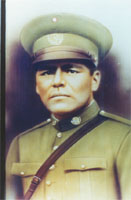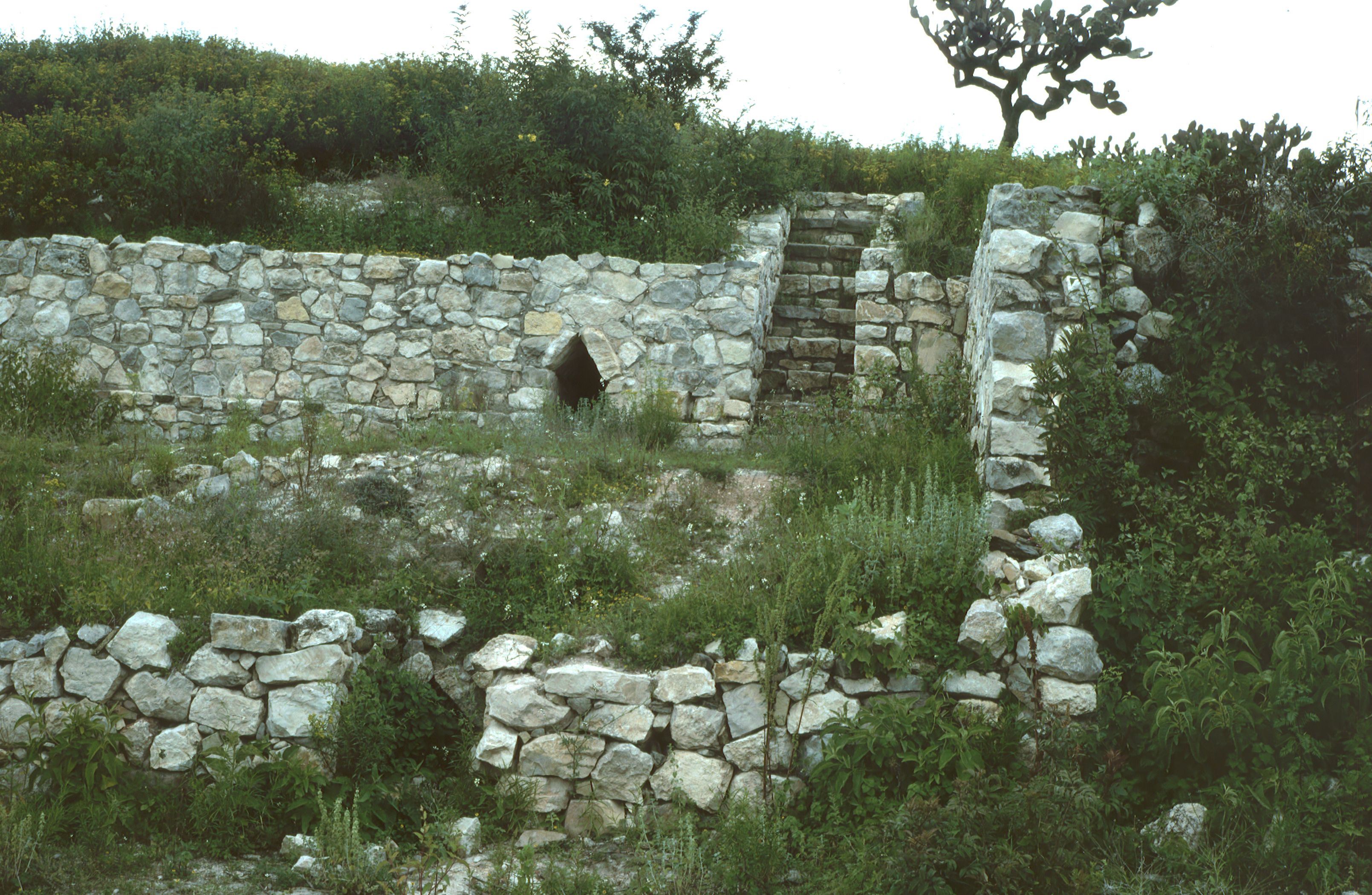|
Alfonso Caso Y Andrade
Alfonso Caso y Andrade (February 1, 1896 in Mexico City – November 30, 1970 in Mexico City) was an archaeologist who made important contributions to pre-Columbian studies in his native Mexico. Caso believed that the systematic study of ancient Mexican civilizations was an important way to understand Mexican cultural roots. As a university student, he was part of a group of young intellectuals known as '' Los Siete Sabios de México'' ("The Seven Sages of Mexico") who founded Mexico City's "Society for Conferences and Concerts", which promoted cultural activity among the student population. One of the other Sages was Vicente Lombardo Toledano, who became Caso's brother-in-law after he married Lombardo's sister, writer María Lombardo: the couple had four children. After her death in 1966, he married her sister Aida. Caso completed a law degree in 1919 and immediately started teaching at the National Autonomous University of Mexico. The systematic legal training he received wou ... [...More Info...] [...Related Items...] OR: [Wikipedia] [Google] [Baidu] |
Archaeology
Archaeology or archeology is the scientific study of human activity through the recovery and analysis of material culture. The archaeological record consists of artifacts, architecture, biofacts or ecofacts, sites, and cultural landscapes. Archaeology can be considered both a social science and a branch of the humanities. It is usually considered an independent academic discipline, but may also be classified as part of anthropology (in North America – the four-field approach), history or geography. Archaeologists study human prehistory and history, from the development of the first stone tools at Lomekwi in East Africa 3.3 million years ago up until recent decades. Archaeology is distinct from palaeontology, which is the study of fossil remains. Archaeology is particularly important for learning about prehistoric societies, for which, by definition, there are no written records. Prehistory includes over 99% of the human past, from the Paleolithic until the adven ... [...More Info...] [...Related Items...] OR: [Wikipedia] [Google] [Baidu] |
Demography
Demography () is the statistics, statistical study of populations, especially human beings. Demographic analysis examines and measures the dimensions and Population dynamics, dynamics of populations; it can cover whole societies or groups defined by criteria such as education, nationality, religion, and ethnicity. Educational institutions usually treat demography as a field of sociology, though there are a number of independent demography departments. These methods have primarily been developed to study human populations, but are extended to a variety of areas where researchers want to know how populations of Social actions, social actors can change across time through processes of birth, death, and Human migration, migration. In the context of human biological populations, demographic analysis uses Public records, administrative records to develop an independent Approximation, estimate of the population. Demographic analysis estimates are often considered a reliable stan ... [...More Info...] [...Related Items...] OR: [Wikipedia] [Google] [Baidu] |
Civilization
A civilization (or civilisation) is any complex society characterized by the development of a state, social stratification, urbanization, and symbolic systems of communication beyond natural spoken language (namely, a writing system). Civilizations are intimately associated with additional characteristics such as centralization, the domestication of plant and animal species (including humans), specialization of labour, culturally-ingrained ideologies of progress, monumental architecture, taxation, societal dependence upon farming, and expansionism. Historically, a civilization has often been understood as a larger and "more advanced" culture, in implied contrast to smaller, supposedly less advanced cultures. In this broad sense, a civilization contrasts with non-centralized tribal societies, including the cultures of nomadic pastoralists, Neolithic societies or hunter-gatherers; however, sometimes it also contrasts with the cultures found within civilizations themselv ... [...More Info...] [...Related Items...] OR: [Wikipedia] [Google] [Baidu] |
Mesoamerica
Mesoamerica is a historical region and cultural area in southern North America and most of Central America. It extends from approximately central Mexico through Belize, Guatemala, El Salvador, Honduras, Nicaragua, and northern Costa Rica. Within this region pre-Columbian societies flourished for more than 3,000 years before the Spanish colonization of the Americas. Mesoamerica was the site of two of the most profound historical transformations in world history: primary urban generation, and the formation of New World cultures out of the long encounters among indigenous, European, African and Asian cultures. In the 16th century, Eurasian diseases such as smallpox and measles, which were endemic among the colonists but new to North America, caused the deaths of upwards of 90% of the indigenous people, resulting in great losses to their societies and cultures. Mesoamerica is one of the five areas in the world where ancient civilization arose independently (see cradle of civ ... [...More Info...] [...Related Items...] OR: [Wikipedia] [Google] [Baidu] |
Aztec
The Aztecs () were a Mesoamerican culture that flourished in central Mexico in the post-classic period from 1300 to 1521. The Aztec people included different Indigenous peoples of Mexico, ethnic groups of central Mexico, particularly those groups who spoke the Nahuatl, Nahuatl language and who dominated large parts of Mesoamerica from the 14th to the 16th centuries. Aztec culture was organized into city-states (''altepetl''), some of which joined to form alliances, political confederations, or empires. The Aztec Empire was a confederation of three city-states established in 1427: Tenochtitlan, city-state of the Mexica or Tenochca; Texcoco (altepetl), Texcoco; and Tlacopan, previously part of the Tepanec empire, whose dominant power was Azcapotzalco (altepetl), Azcapotzalco. Although the term Aztecs is often narrowly restricted to the Mexica of Tenochtitlan, it is also broadly used to refer to Nahuas, Nahua polities or peoples of central Pre-Columbian Mexico, Mexico in the preh ... [...More Info...] [...Related Items...] OR: [Wikipedia] [Google] [Baidu] |
Zapotec Peoples
The Zapotecs ( Valley Zapotec: ''Bën za'') are an indigenous people of Mexico. The population is concentrated in the southern state of Oaxaca, but Zapotec communities also exist in neighboring states. The present-day population is estimated at approximately 400,000 to 650,000 persons, many of whom are monolingual in one of the native Zapotec languages and dialects. In pre-Columbian times, the Zapotec civilization was one of the highly developed cultures of Mesoamerica, which, among other things, included a system of writing. Many people of Zapotec ancestry have emigrated to the United States over several decades, and they maintain their own social organizations in the Los Angeles and Central Valley areas of California. There are four basic groups of Zapotecs: the ', who live in the southern Isthmus of Tehuantepec, the ', who live in the northern mountains of the Sierra Madre de Oaxaca, the southern Zapotecs, who live in the southern mountains of the Sierra Sur, and the Central Va ... [...More Info...] [...Related Items...] OR: [Wikipedia] [Google] [Baidu] |
Mixtec
The Mixtecs (), or Mixtecos, are indigenous Mesoamerican peoples of Mexico inhabiting the region known as La Mixteca of Oaxaca and Puebla as well as La Montaña Region and Costa Chica Regions of the state of Guerrero. The Mixtec Culture was the main Mixtec civilization, which lasted from around 1500 BC until being conquered by the Spanish in 1523. The Mixtec region is generally divided into three subregions based on geography: the Mixteca Alta (Upper Mixtec or Ñuu Savi Sukun), the Mixteca Baja (Lower Mixtec or Ñuu I'ni), and the Mixteca Costa (Coastal Mixtec or Ñuu Andivi). The Alta is drier with higher elevations, while the Baja is lower in elevation, hot but dry, and the Coasta also low in elevation but much more humid and tropical. The Alta has seen the most study by archaeologists, with evidence for human settlement going back to the Archaic and Early Formative periods. The first urbanized sites emerged here. Long considered to be part of the larger Mixteca region, ... [...More Info...] [...Related Items...] OR: [Wikipedia] [Google] [Baidu] |
Olmec
The Olmecs () were the earliest known major Mesoamerican civilization. Following a progressive development in Soconusco, they occupied the tropical lowlands of the modern-day Mexican states of Veracruz and Tabasco. It has been speculated that the Olmecs derived in part from the neighboring Mokaya or Mixe–Zoque cultures. The Olmecs flourished during Mesoamerica's formative period, dating roughly from as early as 1500 BCE to about 400 BCE. Pre-Olmec cultures had flourished since about 2500 BCE, but by 1600–1500 BCE, early Olmec culture had emerged, centered on the San Lorenzo Tenochtitlán site near the coast in southeast Veracruz. They were the first Mesoamerican civilization, and laid many of the foundations for the civilizations that followed. Among other "firsts", the Olmec appeared to practice ritual bloodletting and played the Mesoamerican ballgame, hallmarks of nearly all subsequent Mesoamerican societies. The aspect of the Olmecs most familiar now ... [...More Info...] [...Related Items...] OR: [Wikipedia] [Google] [Baidu] |
Codex
The codex (plural codices ) was the historical ancestor of the modern book. Instead of being composed of sheets of paper, it used sheets of vellum, papyrus, or other materials. The term ''codex'' is often used for ancient manuscript books, with handwritten contents. A codex, much like the modern book, is bound by stacking the pages and securing one set of edges by a variety of methods over the centuries, yet in a form analogous to modern bookbinding. Modern books are divided into paperback or softback and those bound with stiff boards, called hardbacks. Elaborate historical bindings are called treasure bindings. At least in the Western world, the main alternative to the paged codex format for a long document was the continuous scroll, which was the dominant form of document in the Ancient history, ancient world. Some codices are continuously folded like a concertina, in particular the Maya codices and Aztec codices, which are actually long sheets of paper or animal skin folded ... [...More Info...] [...Related Items...] OR: [Wikipedia] [Google] [Baidu] |
Monte Negro (Oaxaca)
Montenegro is a country on the Adriatic coast of the Mediterranean Sea. Montenegro or Monte Negro, meaning "black mountain" in many Romance languages, may also refer to: Montenegro (country) * Republic of Montenegro (1992–2006), a federal unit of the Federal Republic of Yugoslavia, and later Serbia and Montenegro * Socialist Republic of Montenegro, a federal unit of the Socialist Federal Republic of Yugoslavia from 1943 to 1992 * Province of Montenegro, administrative unit within the Kingdom of Serbs, Croats and Slovenes from 1918 to 1922 * Kingdom of Montenegro (1910–1918) * Principality of Montenegro (1852–1910) * Prince-Bishopric of Montenegro (1516-1852) Other places Brazil *Montenegro, Rio Grande do Sul *Monte Negro, Rondônia Colombia *Montenegro, Quindío Mexico * Monte Negro, Oaxaca Spain * Montenegro, Granada, Andalusia * Montenegro de Cameros, Castile and León Arts * ''Montenegro'' (book), a 1997 novel by Starling Lawrence * ''Montenegro'' (film), a 198 ... [...More Info...] [...Related Items...] OR: [Wikipedia] [Google] [Baidu] |
Yucuita
Yucuita (Mixtec: ''Yúku'ita'', meaning ''Hill-flower'', or ''Hill of Flowers'') is an archaeological site located in the Mixtec municipality of San Juan Yucuita in the Mexican state of Oaxaca. It was founded by the Mixtec civilization in the pre-Classic Period as a small village dedicated to agriculture and obsidian. Because of its antiquity and its long-term continuous occupation (from the fourteenth century BCE to the ninth century CE), Yucuita is one of the most studied Mixtec archaeological sites. Description Located in a small plain of Oaxaca's Sierra Mixteca, Yucuita is some northeast of the city of Oaxaca, the capital of the state. Although the precolumbian Mixtecs were not characterized by monumental architecture, in Yucuita there are two architectonic complexes that have been the object of numerous investigations since the 1930s, when Esteban Avendaño explored the zone (1933).Vela and Solanes (2001, p.40) The most recent excavations at the site were in 1976-80 by ... [...More Info...] [...Related Items...] OR: [Wikipedia] [Google] [Baidu] |
.jpg)







